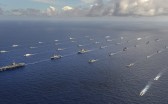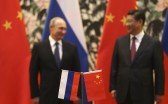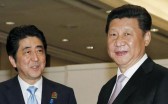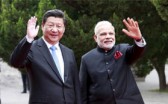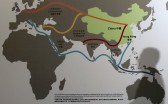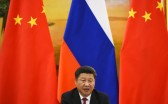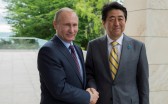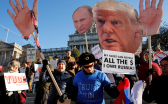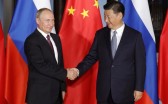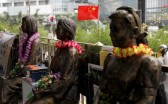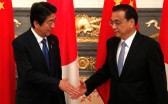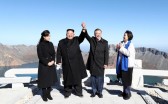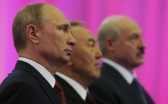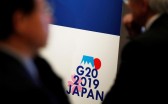Key terms over the past quarter century in strategizing about the Russian Far East include: complementarity, geo-economic competition, modernization, intimidation, and geostrategic competition. Reflecting on them, I revisit the limited optimism in the Positive Scenario II posted in this issue of the journal. There may be grounds for some positive outcomes, but I argue the barriers are more serious than indicated.
Artyom Lukin sees a basis of hope in an improved business climate, a blessing in disguise from low oil prices that galvanize modernizing reforms, and China’s strong interest in Russian oil and gas and eventual investment deals despite delays of late over pricing. He further credits Russia’s need for Western technology and strategic implications for the United States in preventing an “Outer Manchuria” as bolstering recent signs of some improvement in Russian ties to the West. This puts part of the burden on Russia for, at last, taking modernization seriously, and part on the United States for taking the geostrategic competition seriously. It also assumes continued salience of complementarity in the economy of the Russian Far East and those of its neighbors. Looking at bilateral relations, one-by-one, and at reform prospects, I cast doubt on such optimism while holding open just a ray of hope only if all things fall into place. Russia’s interest in modernization is too much in doubt, its antagonism toward the United States too intense, and economic conditions too dire to expect the cycle of rosy plans for the Russian Far East followed by gloomy results to be broken in 2016.
Key Terms behind Russian Policies to Boost the Russian Far East
Complementarity has been the guiding logic of Russian reasoning about the Far East throughout this period. This assumes three things: rapid increases in demand across East Asia for Russia’s resources; competitive pricing and investment protection for those interested in these resources; and a premium for proximity of these natural resources to markets due to strategic considerations. While Russia’s neighbors have each endorsed this logic at times—and some in Japan and China are doing so now—, the case for complementarity is looking increasingly doubtful. First, Russian prices and investment protection have not been reassuring. Second, a glut of oil and other commodities plus a slowdown in economic growth in Northeast Asian states leaves the demand for Russian resources in greater doubt. Finally, infrastructure costs are high, undermining the benefits of proximity despite some security advantages at a time of uncertainty about the Middle East. China’s slowing demand for resources and the world’s lower commodity prices put complementarity under a dark cloud.
The Russian Far East has long counted on geo-economic competition, warning states that unless they acted quickly they would be left on the sidelines. The Sino-Japanese rivalry in the 2000s gave Russians confidence that they could play one off against the other. Even as China and Japan consider new projects in the Russian Far East, it is unlikely that geo-economics has a large role. Talk of Russia having the clout of an energy superpower is no longer heard. There may be economic deals ahead, but the rationale in a world with a surplus of energy is far less likely to be geo-economics.
When Dmitry Medvedev was president, the buzzword was modernization, as plans grew more serious to develop the Russian Far East and use the 2012 Asia-Pacific Economic Cooperation (APEC) summit in Vladivostok to jumpstart the area’s transformation. Yet, state-centered projects were not consistent with stimulation of the private sector, and the large investments by the state in the city of Vladivostok fell far short of making it into a locomotive of its region or a center driving change in Northeast Asia. Later, Vladivostok was given priority as Russia’s first “free port” with visa-free commerce anticipated. The earlier plans have not materialized; so a new stage of supporting the city has been needed.
In the 2010s, riding a massive military build-up and a more assertive foreign policy, Russia turned to neighbors anew, applying more pressure. The message to South Korea was understood to be that Russia would keep increasing its support for North Korea unless South Korea cooperated more on joint projects linked to the North, such as the Khasan-Rason transportation corridor. By boosting ties to Pyongyang at a time it was growing more belligerent, Moscow was sending a message to Seoul. The message to Tokyo was similar: Moscow was drawing closer to Beijing and could forge a Russo-Chinese axis if the Japanese did not act to divert it, especially through an economic breakthrough for the Russian Far East, which would be linked to a deal on a peace treaty, perhaps including a territorial compromise. There was an element of intimidation in these efforts to secure commitments for developing the Russian Far East. Russia was back and could now negotiate from a position of strength. If no intimidation was directed toward China, the very notion that Russia was countering the United States and its allies could be cited as a rationale for why China should do more to assist it economically, not least of all in unrealized plans for the Far East.
The Current Situation
Since 2014, Russian leaders have viewed foreign relations largely through the lens of geopolitics, even considering this the foundation for geo-economic objectives. Only when Sino-Russian relations are close can Russia project the geopolitical strength it desires. Criticism of China is, thus, muted. Although expectations that the linkage of the Silk Road Economic Belt and Eurasian Economic Union would have two vectors, both a western route through Central Asia to European Russia and an eastern route from Northeast China through the Russian Far East and across Siberia, Chinese seem to be doing little to make the eastern vector a reality. Low energy prices make them wary of investments. Western sanctions leave Chinese banks hesitant to move their capital into Russia. Complementarity, when Northeast China suffers from industrial closures, may be in doubt. While some Chinese agreements may reflect an attitude of giving a geopolitical partner—Putin and those in his close circle—some gifts, they do not indicate genuine interest in developing the Russian Far East as an industrial center—competing with China—or Vladivostok as a regional hub—also competing. In the larger geopolitical picture, the Russian Far East is an arena for solidifying the Sino-Russian relationship, even if some call for economic ties to balance China.
South Korea’s complete cut-off of economic relations with North Korea dealt a blow to Russia, which has long insisted that economic ties should be separated from steps to bring about denuclearization—indeed, that closer North–South economic ties are a path toward denuclearization. At the last minute, at Moscow’s insistence, sanctions related to Russian coal transported through Rason were removed from the Security Council resolution 2270, although the plan to export the coal to South Korea is now frozen. Even so, talk continues of Russia “playing the North Korea card,” as it awaits a new opportunity and warns Seoul against deploying the THAAD (Terminal High Altitude Area Defense) missile defense. A new round of pressure on Seoul to assist Russia’s Far East may follow such defiance.
Japan is a more promising partner in the short-term for developing the Russian Far East. Already in his brief stint as prime minister nearly a decade ago, Abe pursued this objective through an initiative with eight parts, the first two of which were energy and transportation. Resuming his wooing of Putin in 2013, Abe made sure to put such cooperation on the agenda, as Japanese suggested that Japan, unlike China, has no geopolitical ambitions in the Russian Far East, i.e., its investments have particular value. Indeed, talk of geopolitical complementarity and a new, balanced foreign policy is widely associated with calls for Japan to assume a large role in this area. If sometimes it is said that Japan has superior technology to China for assisting the Russian Far East, increasingly the case is made mostly on geopolitical grounds—Japan must support Russia or lose out to China and be left with a Sino-Russian axis.
Russia’s military build-up on the Southern Kurile Islands and provocative forays causing Japan to scramble its planes are signs that intimidation is present. This is not the only aspect to a possible breakthrough in relations. There is some hope that with Japan’s investments in the industrial sector of the Russian Far East, there will finally be modernization. Given Japan’s replacement of nuclear energy with liquefied natural gas (LNG) since the Fukushima disaster and Russia’s urgent need for capital, complementarity is also a theme. China and Russia are competing for infrastructure projects in both Southeast Asia and India; so geo-economic competition still has a place in the Far East of Russia. There are lots of reasons for Tokyo and Moscow to agree on a deal that encompasses the Russian Far East. But the single greatest driving force today is geopolitics, as Japan’s leadership seeks to forestall even closer Sino-Russian ties and Russia’s leaders are eager to use the “China card” to elicit Japan’s assistance, when other approaches have failed over many years. Often missing from discussions of these various factors, individually or together, however, is analysis of whether Japan in today’s environment and with its companies wary would boost economic ties much, even if a breakthrough is reached between Abe and Putin leading to a peace treaty, or of whether Russia in light of geopolitical realities would be dissuaded by a deal with Japan from close ties to China and growing reliance on China for the Far East. Geopolitics may be misinterpreted to suggest more reason for optimism than is justified in the environment that now prevails in both Russia and Northeast Asia.
